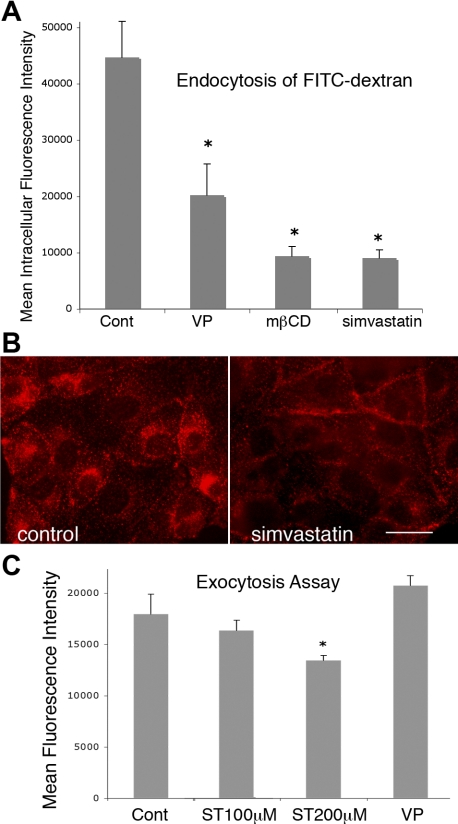Fig. 3.
Simvastatin inhibits endocytosis but has little effect on exocytosis. Endocytosis of the fluid phase marker fluorescein isothiocyanate (FITC)-dextran (10 kDa) in cells treated with simvastatin is significantly reduced by acute treatment with simvastatin in LLC-AQP2 cells (A). There is a significant 75% reduction of the uptake of FITC-dextran by cells treated with 100 μM simvastatin. Similarly, VP and methyl-β-cyclodextrin (mβCD) also cause significant reduction of the endocytosis of FITC-dextran (*P < 0.01). The specific effect of simvastatin on clathrin-medicated endocytosis was also investigated using rhodamine-labeled transferrin (TrfRh), which is endocytosed via the clathrin-mediated pathway (B). Simvastatin greatly reduces the endocytosis of rhodamine-transferrin compared with the untreated control. Much of the rhodamine-transferrin remains on the cell surface without being endocytosed in cells treated with 100 μM simvastatin. In contrast to its dramatic effect on endocytosis, simvastatin causes a minor (∼10%, *P < 0.05) reduction of overall exocytosis in our soluble, secreted yellow fluorescent protein fluorimetric exocytosis assay even at the highest concentration of 200 μM, but not at 100 μM, whereas VP treatment increases overall exocytosis (C), which is consistent with our previous report (9). Error bars represent means ± SE. Data were obtained from 3 independent experiments. Scale bar = 10 μm in B.

